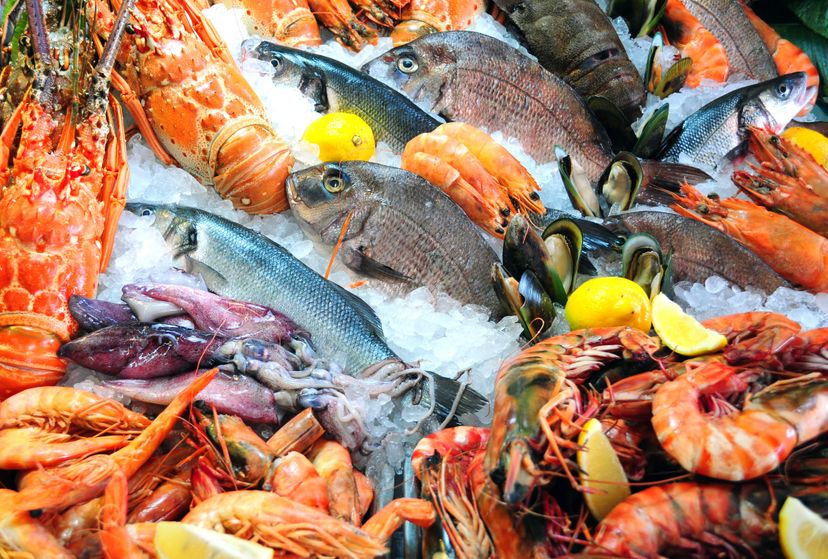
About This Quiz
The oceans provide a bounty of delicious and nutritious treats. How much do you know about the seafood of the world? Take this quiz to find out.People have been eating herring as a staple food for thousands of years.
This ain't chicken. For optimal flavor, almost all seafood is best cooked at low to medium temperatures.
Just a couple of servings of seafood per week can cut your risk of dying from a heart attack.
Advertisement
At 90 percent, almost all American seafood is caught or farmed by other countries.
Americans eat about four pounds of shrimp per person, per year.
A mild vinegar imparts a distinctive taste; this dish is typically served cold.
Advertisement
The thorax section of these animals are a little different, but they taste pretty much the same.
More than half of the seafood caught in the U.S. comes from Alaska; Louisiana is a distant second.
About 3.5 ounces is only half of what the Department of Agriculture recommends. Seafood is full of nutrients that benefit the human body.
Advertisement
Lox is brined salmon, and it's often served on a bagel with cream cheese and capers.
Some fish, like swordfish, are often higher in mercury, which can harm fetuses.
Oily fish, like sardines and mackerel, are very high in omega-3 fatty acids, which help combat a wide array of human ailments.
Advertisement
You may want to avoid chowing down on the lobster's throat, unless you really like brains.
The species, which can reach 1,000 pounds, is endangered in large part due to overfishing.
Atlantic halibut can live half a century, but they reproduce far too slowly to be a sustainable food option.
Advertisement
Roughly half is farmed, and the other half is caught from the wild.
They can live more than a century, and they are very slow to reproduce, making them susceptible to overfishing.
Caught in the Mekong River Delta area, swai (aka tra or basa) is a mild white fish that is cheap compared to many species.
Advertisement
The chum (or dog) salmon isn't highly sought for its flesh, but the roe is frequently used for sushi.
Cold milk gently thaws seafood and imparts a delicious flavor.
Sardines are jam-packed with fatty acids, and they are also loaded with vitamin D, which is lacking in many foods.
Advertisement
Most snow crabs in U.S. markets are caught in Canada, Greenland or areas around Russia.
Scaled fish were OK, but shrimp were considered an abomination.
Australians often use flake, cod and snapper for their fish and chips.
Advertisement
Scallops can be a wonderful source of nutrition, especially for vitamin B-12, which is essential for optimal neurological system function.
These small, short-lived fish manage to reproduce in great quantities despite consistent fishing pressure.
The chinook (or king) salmon has a silky, rich texture that commands high prices.
Advertisement
About a quarter of American seafood winds up in cans, which are great for long-term storage.
Bill Clinton called for the ban, which worked - populations of the fish bounced back in the Atlantic Ocean.
Caught mostly around Alaska, these 5-foot creatures can weigh more than 20 pounds (9 kilograms).
Advertisement